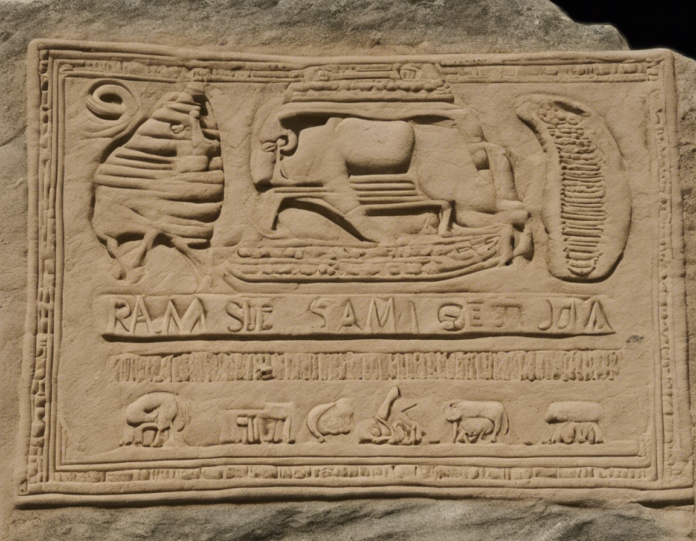Have you ever wondered about the elaborate history and significance of the Ram Setu stone also known as Adam’s Bridge? This ancient structure, located between India and Sri Lanka, has been a subject of curiosity and debate for centuries. Let’s delve into the depths of this fascinating topic and explore the mysteries surrounding the Ram Setu stone.
The Legend of Ram Setu
Ram Setu, also known as Rama’s Bridge or Adam’s Bridge, is a chain of limestone shoals between Pamban Island, also known as Rameswaram Island, off the southeastern coast of Tamil Nadu, India, and Mannar Island, off the northwestern coast of Sri Lanka. This structure is believed to have been constructed by Lord Rama and an army of monkeys to rescue his wife, Sita, from the demon king Ravana.
Scientific Explanations
Geological Formation
Geological studies suggest that the Ram Setu stone is a natural formation rather than a man-made structure. The limestone shoals are believed to have formed as a result of coral reefs, sediments, and sand deposits over thousands of years.
Carbon Dating
Carbon dating of the Ram Setu stone samples has indicated that the formation dates back thousands of years, aligning with the timelines of the ancient Hindu texts that mention the bridge’s construction during the Ramayana era.
Historical Significance
The Ram Setu stone holds immense cultural and historical significance for Hindus around the world. It symbolizes the divine powers of Lord Rama and his ability to overcome obstacles with the help of his allies, including the monkey god Hanuman.
Controversies and Debates
Environmental Concerns
In recent years, there have been debates surrounding the proposed Sethusamudram Shipping Canal Project, which aims to dredge a shipping route through the Ram Setu area. Environmentalists and religious groups have opposed the project, citing ecological damage and the potential destruction of a cultural heritage site.
Archaeological Evidence
While some believe in the mythological origins of Ram Setu, others argue that there is a lack of concrete archaeological evidence to support the claim that the structure was built by Lord Rama. The debate between faith and science continues to fuel discussions on the authenticity of the bridge.
Religious Beliefs
For millions of Hindus, the Ram Setu stone represents a connection to their faith and the power of devotion. The bridge is considered a sacred site where pilgrims pay homage to Lord Rama and seek blessings for prosperity and success.
Conservation Efforts
In an effort to preserve the cultural and environmental integrity of the Ram Setu stone, various organizations and government bodies have initiated conservation projects to protect the natural habitat and heritage value of the area. These efforts aim to balance development with the preservation of sacred sites.
Exploring the Myth
While the Ram Setu stone continues to be shrouded in mystery and folklore, its symbolic importance transcends geographical boundaries and religious beliefs. The bridge serves as a testament to the enduring legacy of ancient civilizations and the power of storytelling in shaping cultural identities.
FAQs about Ram Setu
- Is Ram Setu a natural formation or a man-made bridge?
-
While geological studies suggest that the structure is a natural formation, religious beliefs attribute its creation to Lord Rama.
-
What is the significance of Ram Setu in Hindu mythology?
-
Ram Setu is believed to be the bridge built by Lord Rama and his army to reach Lanka and rescue his wife, Sita, from Ravana.
-
Why is Ram Setu also known as Adam’s Bridge?
-
The bridge is also called Adam’s Bridge due to its mention in Islamic and Christian folklore, where it is believed to be the route taken by Adam to reach Adam’s Peak in Sri Lanka.
-
Have any scientific studies been conducted on Ram Setu?
-
Yes, carbon dating and geological surveys have been carried out to study the formation and age of the bridge.
-
What are the environmental concerns surrounding the Ram Setu area?
- Environmentalists have raised concerns about the proposed dredging of the Sethusamudram Shipping Canal Project, citing potential damage to the ecosystem and cultural heritage.
In conclusion, the Ram Setu stone stands as a bridge between history and mythology, science and faith. Its enduring presence serves as a reminder of the rich tapestry of beliefs and narratives that shape our understanding of the world. Whether viewed as a natural wonder or a divine creation, the Ram Setu stone continues to captivate minds and hearts with its timeless allure.
